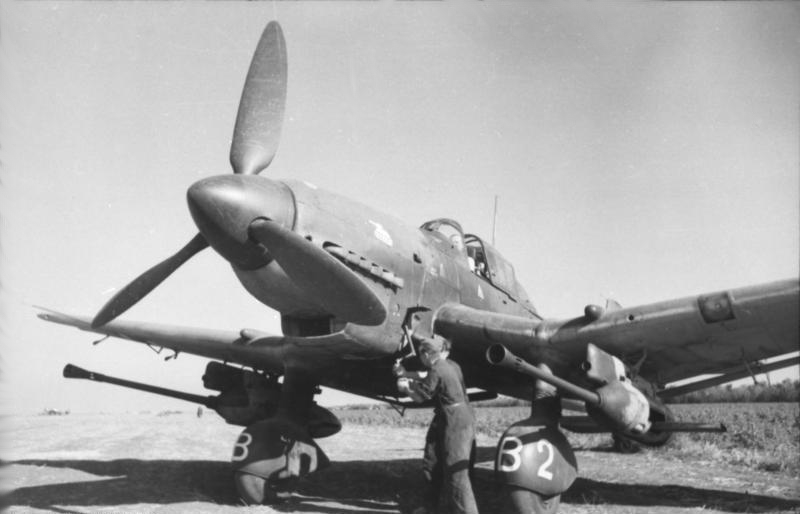one shot from either of those would demolish most soft-skinned targets, and they can do it much farther than 30mm.
The disadvantage would be the extra weight, enormous reduction in shells, and unneeded redundancy since 80mm rockets exist.




max steel wrote:Nobody Does It Better: Russian Aircraft Cannons Outgun America’s Modern automatic aircraft cannons are a combination of artillery guns and rates of fire usually found on conventional machine guns. Some types of Russian-made canons can fire even faster than that.
One of these wonder weapons is the Gryazev-Shipunov GSh-6-23 six-barreled 23 mm rotary cannon.
The GSh-6-23 has an extremely high rate of fire, with maximum cyclic rates of 9,000 to 10,000 rounds per minute. Compared to the US M61 Vulcan, the GSh-6-23 fires 50-66 percent more rounds per minute, has a heavier projectile, but lower muzzle velocity. The weapon is also lighter and shorter.
An updated version of the GSh-6-23 is standard equipment on the Sukhoi Su-24 bombers and the MiG-31 all-weather interceptor.
A six-barrel version of the GSh-6-23 can also be mounted on the MiG-27 fighter-bomber, even though the plane already carries a 30mm automatic cannon capable of firing 6,000 rounds per minute making it the fastest such weapon around.
Vulcan better advantage in aiming when you got very short time window in dogfight.
GarryB wrote:Vulcan better advantage in aiming when you got very short time window in dogfight.
Not true.
The Vulcan is not only a heavier gun... it also needs a quite powerful electric motor to fire, which is heavy and takes a second or two to wind up to full speed, so a half second burst will not fire anything like the cyclic rate of the gun.
the Soviet guns on the other hand are gas powered and accelerate much more rapidly to full speed leading to even more rounds on target...
You may spray lots of rounds but not necessarily you get them on target. In AA fight aiming due to high maneuvers is non trivial if your round has poor ballistic trajectory. I wish I had comparison. The discussion would be easier
Yes but Russia, seems to give up AAA, and prefer to bet on missiles. However there are other solutions like SA-19 Grison -dubbed Tunkuska-, and SA-22 Greyhound - dubbed Pantsir-.Isos wrote:
Does russia have something like that ?
against small boat maybe effective, but one cannon firing against cruise missiles, or anti ship missiles, I don't think so, except if you have subsonic cruise missiles, or anti ship missiles, and you have a battery compsed with at least 30 guns like that firing in the same time. Maybe the best solution stays the Gattling guns as GAU familly, or Shiponow family -dubbed Kahstan-.Isos wrote:
Is it effective against cruise or anti ship missiles ?

Isos wrote:
Does russia have something like that ? Is it effective against cruise or anti ship missiles ?
 reply
replyWerewolf wrote:Did you guys miss the new 57mm guns that are under development for the exact Anti Aircraft purpose?
Does russia have something like that ? Is it effective against cruise or anti ship missiles ?
Its mainly used as naval gun, rather than "air defence gun", USSR had in same caliber ЗИФ-75 but it did not survive to this day i belive, was around till 90s but it was not nearly "advanced" as the Bofors you are wondering about.
Russians switched to "bigger" guns mostly 76mm and 100/120mm on bigger ships.
Atm closest that Russia is active in fielding is AK-176 76mm gun, however its direct counterpart would be Otobreda Melara 76mm.
It should be actually fairly effective aganist aerial targets due to its very high rate of fire, FCS and programmable ammunition.

GarryB wrote:AFAIK the Russians have a new 57mm gun for naval use that will use the new guided shells developed for the Army, and no doubt include a HE round with a time fuse like they developed for their 30mm cannons and 125mm cannons.

But to my knowledge its still not in service.
 Does russia have something like that ? Is it effective against cruise or anti ship missiles ?
Does russia have something like that ? Is it effective against cruise or anti ship missiles ?GarryB wrote:
With guided shells it might even be a potential replacement for 30mm weapons on the very large ships...